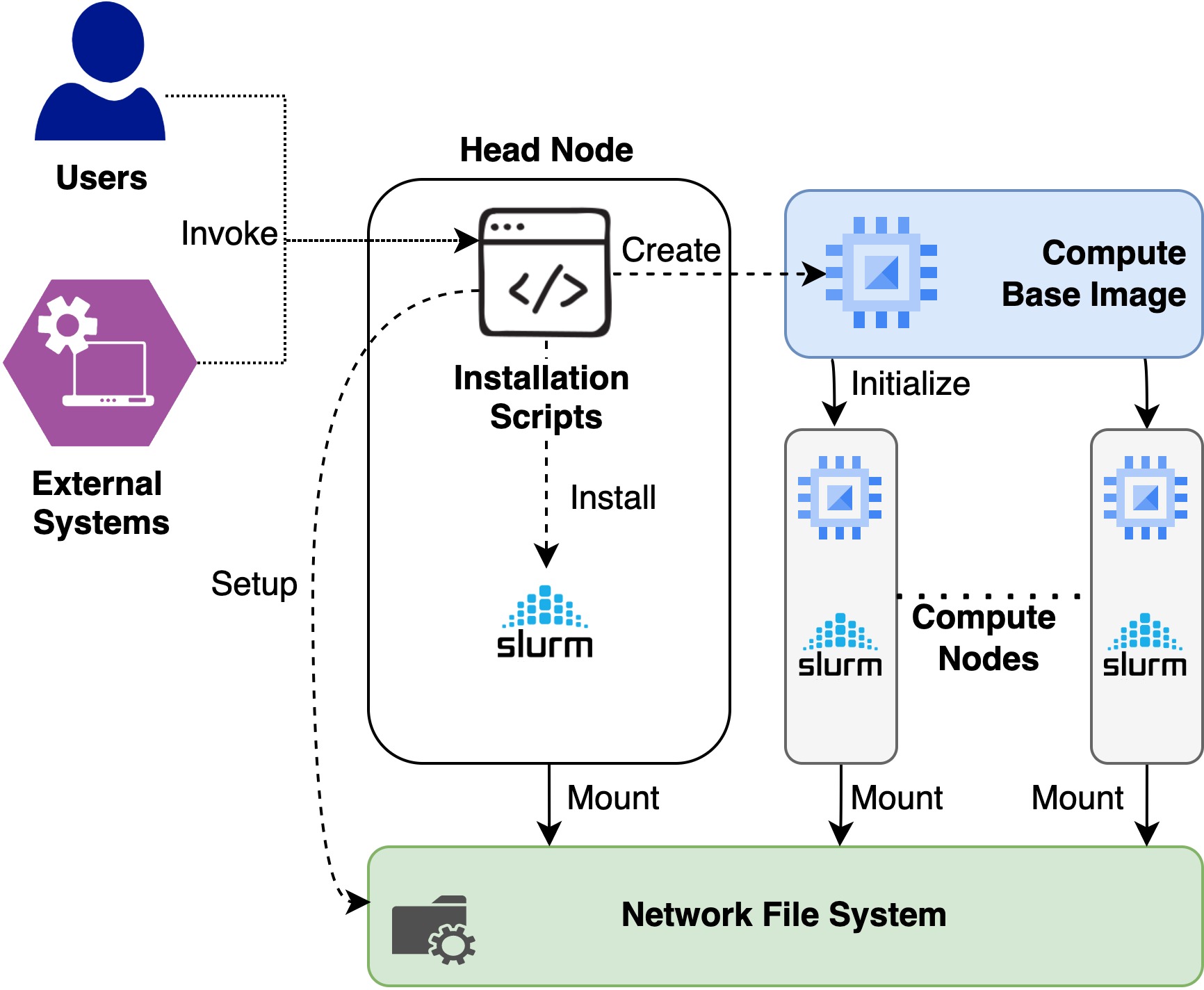Elastic Slurm Cluster on the Jetstream 2 Cloud
Intro
This repo contains scripts and ansible playbooks for creating a virtual cluster in an Openstack environment, specifically aimed at the XSEDE Jetstream2 resource.
The basic structure is to have a single image act as headnode, with compute nodes managed by SLURM via the openstack API. A customized image is created for worker nodes, which contains configuration and software specific to that cluster. The Slurm daemon on the headnode dynamically creates and destroys worker nodes in response to jobs in the queue (refer to the figure below). The current version is based on Rocky Linux 8, using RPMs from the OpenHPC project.
As current installation scripts work for Rocky Linux 8 distribution it is expected to have a virtual machine created from the latest Rocky Linux 8 base image in Jestream 2 before proceeding with the installation
Installation
-
Login to the Rocky Linux installed virtual machine. This is the installation host and the head node for the virtual cluster
-
Move to the rocky user if you are in a different user.
sudo su - rocky -
If you have not already done, create an openrc fire for your jetsream2 account by following the Jestream 2 Documentation
-
Copy the generated openrc file to the home directory of rocky user
-
Clone the XCRI Virtual Cluster repository
-
If you'd like to modify your cluster, now is a good time!
- The number of nodes can be set in the slurm.conf file, by editing the NodeName and PartitionName line.
- If you'd like to change the default node size, the
node_size=line inslurm_resume.shmust be changed. - If you'd like to enable any specific software, you should edit
compute_build_base_img.yml. The task named "install basic packages" can be easily extended to install anything available from a yum repository. If you need to add a repo, you can copy the task titled "Add OpenHPC 1.3.? Repo". For more detailed configuration, it may be easiest to build your software in /export on the headnode, and only install the necessary libraries via the compute_build_base_img (or ensure that they're available in the shared filesystem). - For other modifications, feel free to get in touch!
-
Now you are all set to install the cluster. Run
cluster_create_local.shas the rocky user. This will take around 30 minutes to fully install the cluster. -
If you need to destroy the cluster, Run
cluster_destroy_local.sh. This will decommission the SLURM cluster and any runnning compute nodes. If you need to delete the headnode as well, pass the -d paramaeter to cluster destroy script
Usage note:
Slurm will run the suspend/resume scripts in response to
scontrol update nodename=compute-[0-1] state=power_down
or
scontrol update nodename=compute-[0-1] state=power_up
If compute instances got stuck in a bad state, it's often helpful to cycle through the following:
scontrol update nodename=compute-[?] state=down reason=resetting
scontrol update nodename=compute-[?] state=idle
or to re-run the suspend/resume scripts as above (if the instance power state doesn't match the current state as seen by slurm). Instances in a failed state within Openstack may simply be deleted, as they will be built anew by slurm the next time they are needed.

